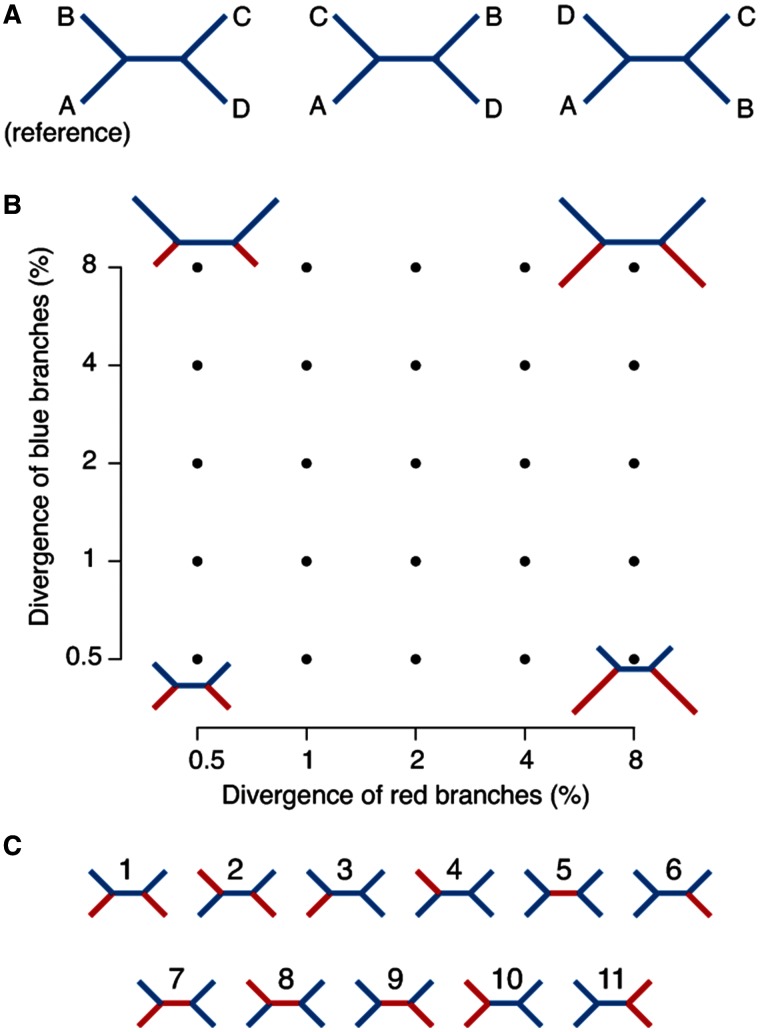Fig. 1.
Tree shapes and branch lengths used to simulate sequence evolution. (A) The three possible topologies in a four-taxon tree. (B) The sample space of tree topologies. Each axis indicates the divergence along one set of branches: the divergence of the red branches is indicated along the x-axis and the divergence of the blue branches is indicated along the y-axis. We sampled at five points along each axis, that is, at 0.5, 1, 2, 4, and 8% divergence, for a total of 25 different combinations of branch lengths. (C) All possible tree shapes are considered in the analyses. There are 11 total tree shapes in a four-taxon tree that divide the branches into two types (shown here as red and blue). In all our analyses, the reference node is the lower left node of the tree.

